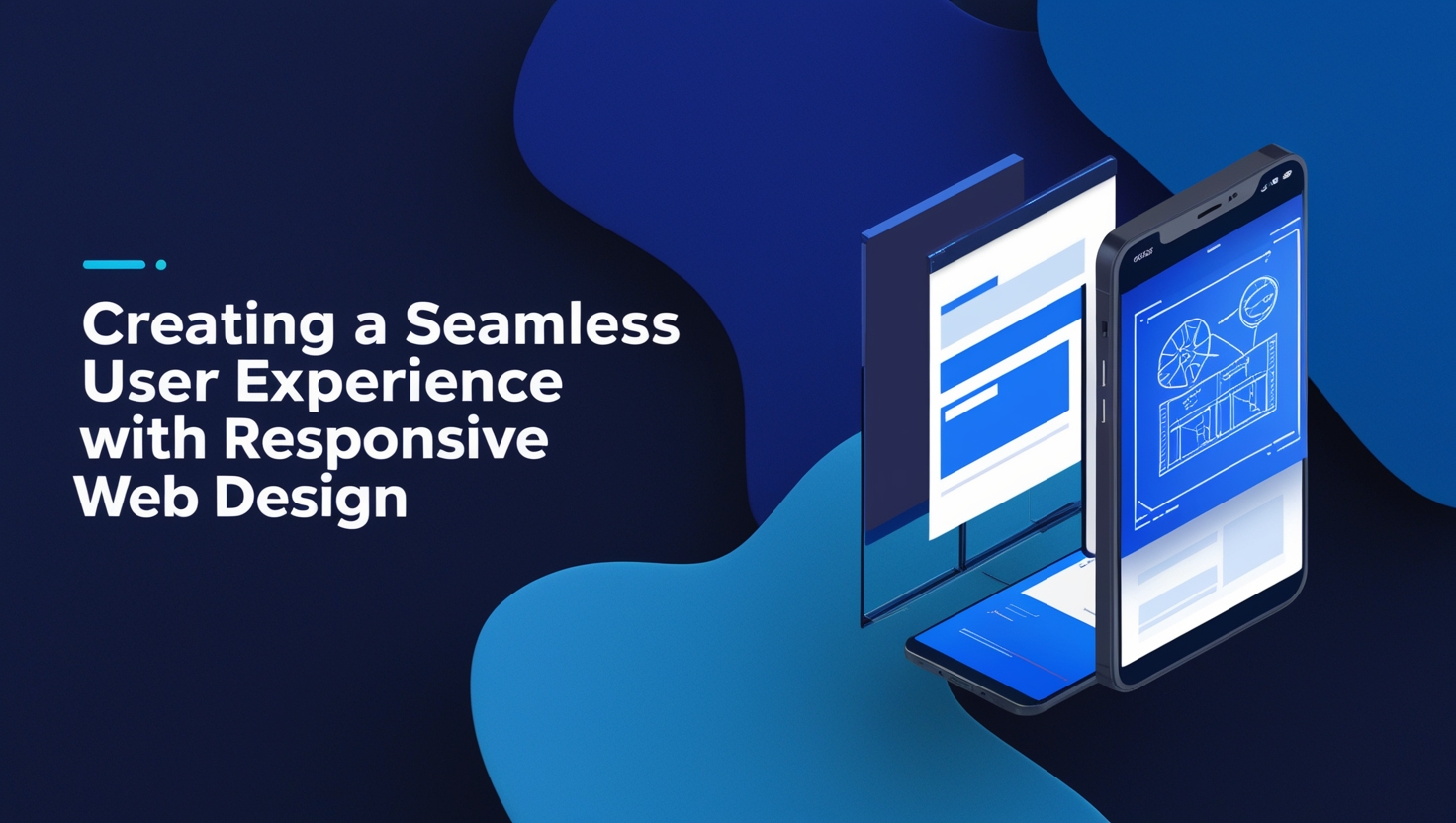Creating a seamless user experience is essential for any website. A responsive web design is one of the most effective ways to achieve this. Responsive web design allows websites to adapt to different screen sizes and devices, providing users with a consistent and seamless experience across all platforms.
To create a seamless user experience with responsive web design, it is important to understand the principles of good design. This includes using clear and concise messaging, intuitive navigation, and a visually appealing layout. Additionally, it is crucial to consider the needs and preferences of the target audience when designing a website. This includes understanding their browsing habits, device preferences, and accessibility requirements.
By implementing responsive web design principles, websites can improve their user experience and increase engagement. This can lead to higher conversion rates, increased customer loyalty, and improved brand reputation. In the following sections, we will explore the key principles of responsive web design and provide practical tips for creating a seamless user experience.
Understanding the Importance of Responsive Web Design
Responsive web design (RWD) is a design approach that aims to create websites that provide an optimal viewing experience across a wide range of devices, from desktop computers to mobile phones. It is important to understand the significance of RWD in creating a seamless user experience, which is essential for user engagement and retention.
One of the key benefits of RWD is that it allows for fluid layouts that adapt to the screen size of the device being used. This means that users can view the same content on different devices without having to zoom in or out or scroll horizontally. This consistency in user experience is crucial for customer retention and satisfaction.
Furthermore, RWD is essential for future-proofing websites, as it ensures that they remain mobile-friendly and accessible on new devices that are released in the future. By adopting RWD, websites can keep up with the ever-changing landscape of technology and user behaviour.
Another important aspect of RWD is the foundation it provides for creating a seamless user experience. By designing a website with RWD in mind, designers can ensure that the user experience is consistent and intuitive across all devices. This can lead to increased engagement and user feedback, which can be used to improve the website further.
In summary, understanding the importance of RWD in creating a seamless user experience is crucial for designing websites that are engaging, future-proof, and consistent across all devices. By adopting RWD, designers can ensure that their websites provide an optimal viewing experience for all users, regardless of the device they are using.
Fundamentals of Responsive Web Design
Responsive web design is an approach to web design that ensures the website’s layout, content, and functionality adapts to the user’s screen size, platform, and orientation. It aims to provide a seamless user experience across all devices, including desktops, laptops, tablets, and mobile phones.
One of the fundamental principles of responsive web design is the use of flexible grids and layouts. This means that the web page’s layout adjusts according to the screen size and resolution, ensuring that the website’s content is always visible and easy to read. Flexible grids and layouts also allow the website to adapt to different orientations, such as landscape and portrait modes.
Another important aspect of responsive web design is the use of relative units, such as percentages and ems, instead of absolute units like pixels. This allows the website to scale up or down depending on the user’s screen size and resolution. It also enables the website to adjust the font size and other elements’ size proportionally, ensuring that the website’s content is always readable.
Responsive web design also involves the use of flexible images and responsive typography. Flexible images allow the website’s images to adapt to the user’s screen size and resolution, ensuring that they are always visible and not distorted. Responsive typography involves using relative units for font size and line height, ensuring that the website’s text is always readable and legible.
Finally, responsive web design involves the use of breakpoints, which are specific screen sizes where the website’s layout and content change. These breakpoints enable the website to adapt to different screen sizes and resolutions, ensuring that the website’s content is always visible and easy to read.
Overall, understanding the fundamentals of responsive web design is essential for creating a seamless user experience across all devices and platforms. By using flexible grids, relative units, flexible images, responsive typography, and breakpoints, web designers can ensure that their websites are accessible and user-friendly on any device.
Adapting Design for Different Devices
Responsive web design is all about creating a seamless user experience that adapts to different devices. With the increasing number of devices available in the market, it is essential to ensure that your website provides a consistent experience to all users, regardless of the device they use.
One of the key aspects of responsive web design is adapting the design for different screen sizes. This is achieved by using media queries that allow the website to adjust its layout based on the screen size of the device. By using a mobile-first approach, designers can create mobile-friendly websites that work well on smaller screens and then expand the design for larger screens such as desktops and tablets.
Another important consideration is the resolution of the device. With the increasing popularity of high-resolution screens, it is essential to design websites that look good on all resolutions. This can be achieved by using scalable vector graphics (SVGs) and designing with a flexible grid system.
When designing for mobile devices, it is important to consider the orientation of the device. Responsive web design allows for the website to adjust its layout based on the orientation of the device, whether it is in portrait or landscape mode. This ensures that the user has a consistent experience no matter how they hold their device.
Consistency is key when it comes to responsive web design. It is important to ensure that the website provides a consistent user experience across all devices. This includes maintaining consistency in the design, layout, and functionality of the website.
By adapting the design for different devices, designers can create a seamless user experience that works well on all devices. With the increasing number of devices available in the market, it is essential to ensure that your website provides a consistent experience to all users, regardless of the device they use.
Testing and Optimising Responsive Web Design
Testing and optimising responsive web design is an essential step in creating a seamless user experience. The process involves testing the website across different devices, platforms, and browsers to ensure that it functions correctly and looks great on all of them.
One of the best practices for testing responsive web design is using a tool like BrowserStack. It allows developers to test their website across different browsers and devices without having to buy them. This tool also provides insights into cross-browser compatibility and performance optimization.
Another crucial aspect of testing and optimising responsive web design is performance optimization. This involves optimizing images, compressing files, and reducing load times to improve the website’s performance. A faster website not only improves the user experience but also boosts search engine rankings and reduces bounce rate.
CSS styles play a significant role in responsive web design. It is essential to ensure that the CSS is well-organized, easy to read, and optimised for performance. Developers should also test their CSS styles across different devices and platforms to ensure that they work seamlessly.
Testing and optimising responsive web design also involves optimising for conversions. Developers should test different variations of the website to see which one performs better in terms of conversions. This process involves A/B testing, user testing, and analytics to track user behaviour and identify areas for improvement.
In conclusion, testing and optimising responsive web design is a crucial step in creating a seamless user experience. Developers should use tools like BrowserStack to test their website across different browsers and devices, optimize performance, CSS styles, and conversions. By following these best practices, developers can create a responsive website that looks great and functions seamlessly on all devices and platforms.
Responsive Web Design Frameworks
A responsive web design framework is a collection of CSS, JavaScript, and HTML files that developers use to create a responsive website. The framework provides a structure for the website, including layout, typography, and colour schemes. The framework also includes pre-built components, such as navigation menus, forms, and buttons, that developers can use to speed up the development process.
Bootstrap is one of the most popular responsive design frameworks. It is a free and open-source framework that includes a responsive grid system, CSS and JavaScript components, and pre-built templates. Bootstrap is easy to use and has a large community of developers who share their knowledge, resources, and code snippets.
Another popular responsive design framework is Semantic UI. It is a modern framework that uses human-friendly HTML to create responsive layouts. Semantic UI includes pre-built components, such as buttons, forms, and menus, that developers can use to create a responsive website quickly.
Grid systems are an essential part of responsive web design frameworks. A grid system is a set of guidelines that developers use to create a consistent layout for their website. The grid system divides the website into columns and rows, making it easier to align content and create a responsive design. Bootstrap and Semantic UI both include grid systems that developers can use to create a responsive website.
While responsive design frameworks like Bootstrap and Semantic UI can speed up the development process, custom coding is still necessary to create a unique and personalised website. Developers can use the framework as a starting point and then customise the code to fit their specific needs. Alternatively, developers can create their own responsive design framework from scratch.
WordPress is a popular content management system that includes responsive design themes and plugins. WordPress themes are pre-built templates that developers can use to create a responsive website quickly. WordPress plugins are add-ons that developers can install to add new features and functionality to their website.
Impact of Responsive Design on Business Metrics
Responsive design has a significant impact on business metrics. It enhances the user experience by making the website accessible on any device, be it a desktop, tablet, or mobile phone. This accessibility leads to increased engagement, which in turn leads to higher conversions. A website that is not mobile-friendly can result in a loss of potential customers, as users are more likely to leave a website that does not display correctly on their device.
Responsive design also plays a crucial role in mobile marketing. With the increasing use of mobile devices, businesses need to ensure that their website is optimised for mobile users. A responsive design ensures that the website is accessible on any device, which can lead to increased website traffic, cost savings, and mobile e-commerce sales. According to a report by Statista, mobile e-commerce sales are projected to reach £3.56 trillion in 2021, accounting for 72.9% of total e-commerce sales.
Moreover, responsive design can improve user behaviour on a website. A responsive website provides a consistent user experience across all devices, which can lead to increased engagement and conversions. A website that is not optimised for mobile devices can lead to frustration and a poor user experience, resulting in a loss of potential customers.
Another benefit of responsive design is that it eliminates the need for separate websites for desktop and mobile users. This can result in cost savings for businesses, as they no longer need to maintain and update multiple websites. Additionally, a responsive website can improve search engine optimization (SEO), resulting in increased organic traffic and a wider audience.
In conclusion, responsive design is an essential aspect of modern web development. It can lead to increased engagement, conversions, and mobile e-commerce sales, as well as cost savings and improved SEO. A responsive website provides a consistent user experience across all devices, resulting in a more engaging experience for users and consistent branding and messaging for businesses.
Creating a Seamless User Experience with Responsive Web Design
When it comes to designing a website, creating a seamless user experience should be a top priority. Responsive web design is a technique that can help achieve this goal. By using responsive web design, a website can adapt to different screen sizes and devices, ensuring that users have a consistent experience regardless of how they access the site.
One key element of responsive web design is button size. Buttons should be large enough for users to easily tap on a touchscreen device, while still remaining visible on larger screens. This can help improve the user experience by making it easier for users to navigate the site and complete tasks.
Another important aspect of creating a seamless user experience is the use of a content management system (CMS). A CMS can help web designers easily manage and update website content, ensuring that users always have access to the most up-to-date information.
User feedback is also an important part of creating a seamless user experience. By gathering feedback from users, web designers can identify areas for improvement and make changes to the site accordingly. This can help improve customer retention and ensure that users continue to return to the site.
Overall, creating a seamless user experience with responsive web design requires careful attention to detail and a focus on user needs. By prioritising elements such as button size, content management, and user feedback, web designers can create a site that is easy to use and provides a positive experience for all users.







